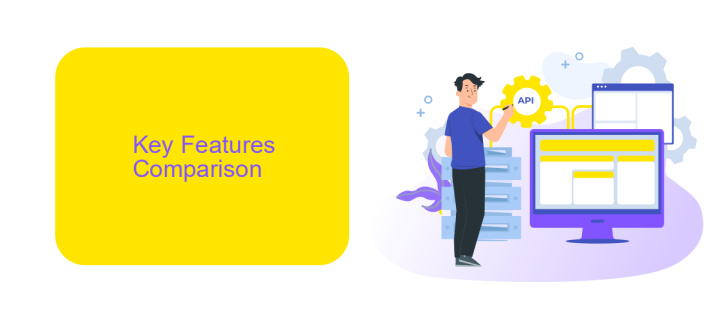Power Automate Vs MuleSoft
In today's rapidly evolving digital landscape, businesses seek robust automation solutions to streamline processes and enhance efficiency. Power Automate and MuleSoft are two leading platforms in this domain, each offering unique capabilities and benefits. This article delves into a comparative analysis of Power Automate and MuleSoft, exploring their features, strengths, and ideal use cases to help organizations make informed decisions.
Introduction
In today's digital landscape, businesses are increasingly relying on automation and integration platforms to streamline their operations and enhance productivity. Two prominent players in this field are Power Automate and MuleSoft, each offering unique features and capabilities to meet diverse business needs.
- Power Automate: A cloud-based service by Microsoft, designed to automate workflows between various apps and services.
- MuleSoft: An integration platform that provides tools for connecting applications, data, and devices across on-premises and cloud environments.
- ApiX-Drive: A versatile service that simplifies the integration process, enabling seamless data transfer between different platforms without the need for coding.
Choosing the right platform depends on various factors, including the specific requirements of your business, the complexity of your workflows, and your existing technological infrastructure. In this article, we will compare Power Automate and MuleSoft, highlighting their strengths and weaknesses to help you make an informed decision.
Key Features Comparison

Power Automate and MuleSoft are prominent tools in the realm of automation and integration, yet they cater to different needs. Power Automate, a Microsoft product, excels in automating workflows across various Microsoft services like Office 365 and Dynamics 365. It offers a user-friendly interface and pre-built templates, making it accessible for non-developers. Additionally, Power Automate integrates well with third-party applications, enhancing its versatility in automating repetitive tasks and streamlining business processes.
On the other hand, MuleSoft is designed for more complex integrations, offering a robust platform for connecting various systems, applications, and data sources. Its Anypoint Platform provides comprehensive tools for API design, development, and management, making it ideal for large-scale enterprise integrations. While both tools offer integration capabilities, services like ApiX-Drive can further simplify the process by providing a no-code platform to connect various applications and automate workflows, making it a valuable ally for businesses seeking efficient and seamless integrations.
Use Cases and Industry Adoption

Power Automate and MuleSoft are widely adopted across various industries due to their robust capabilities in automating workflows and integrating disparate systems. These tools are pivotal in enhancing operational efficiency and streamlining business processes.
- Finance: Automating transaction processing and compliance reporting.
- Healthcare: Integrating electronic health records (EHR) and patient management systems.
- Retail: Synchronizing inventory management and customer relationship management (CRM) systems.
- Manufacturing: Streamlining supply chain operations and production workflows.
- Education: Automating student enrollment and administrative tasks.
Both Power Automate and MuleSoft are leveraged by enterprises to create seamless integrations. Additionally, services like ApiX-Drive facilitate these integrations by providing a user-friendly platform to connect various applications without extensive coding. This makes it easier for businesses to adopt and implement automated workflows, thereby enhancing productivity and operational efficiency.
Architecture and Integration Capabilities

Power Automate and MuleSoft offer distinct architectural designs and integration capabilities tailored to different business needs. Power Automate, a part of the Microsoft Power Platform, emphasizes a low-code/no-code approach, making it accessible to non-developers. MuleSoft, on the other hand, is an enterprise-grade solution that supports complex integrations through its Anypoint Platform, catering primarily to developers and IT professionals.
Both platforms excel in connecting disparate systems and automating workflows, but their methodologies differ. Power Automate leverages pre-built connectors and templates to simplify the integration process, whereas MuleSoft uses APIs to create a more customizable and scalable integration environment. This difference significantly impacts how businesses approach their integration strategies.
- Power Automate: Best for quick, straightforward integrations with minimal coding.
- MuleSoft: Ideal for complex, large-scale integrations requiring robust API management.
- ApiX-Drive: A versatile service that can enhance integration processes by providing an easy-to-use interface for connecting various applications.
Ultimately, the choice between Power Automate and MuleSoft depends on the specific requirements of your business. For organizations seeking rapid deployment and ease of use, Power Automate is a suitable choice. Conversely, for those needing a powerful, API-driven solution, MuleSoft offers the necessary tools and flexibility.
Pricing and Support
When it comes to pricing, Power Automate offers a range of plans starting from a free tier with limited capabilities to premium subscriptions that unlock advanced features and higher usage limits. MuleSoft, on the other hand, operates on a subscription-based model that can be more expensive, but it provides comprehensive tools for enterprise-level integrations. Both platforms offer flexible pricing to cater to different business needs, but MuleSoft's cost may be a consideration for smaller businesses.
In terms of support, Power Automate provides a robust support system, including community forums, extensive documentation, and premium support options for enterprise customers. MuleSoft offers a similar level of support with detailed documentation, a dedicated customer success team, and premium support packages. Additionally, services like ApiX-Drive can assist in setting up integrations for both platforms, providing an extra layer of support and ensuring seamless connectivity between various applications.


FAQ
What are the primary differences between Power Automate and MuleSoft?
Which tool is better for enterprise-level integration projects?
Can Power Automate and MuleSoft be used together?
What are the cost implications of using Power Automate vs. MuleSoft?
Is there an alternative for simpler integrations and automations?
Time is the most valuable resource in today's business realities. By eliminating the routine from work processes, you will get more opportunities to implement the most daring plans and ideas. Choose – you can continue to waste time, money and nerves on inefficient solutions, or you can use ApiX-Drive, automating work processes and achieving results with minimal investment of money, effort and human resources.

